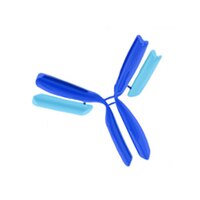MAB3773 Sigma-AldrichAnti-Annexin I Antibody, clone 6E4/3
Anti-Annexin I Antibody, clone 6E4/3 detects level of Annexin I & has been published & validated for use in ELISA, IF & WB.
More>> Anti-Annexin I Antibody, clone 6E4/3 detects level of Annexin I & has been published & validated for use in ELISA, IF & WB. Less<<Produits recommandés
Aperçu
| Replacement Information |
|---|
Tableau de caractéristiques principal
| Species Reactivity | Key Applications | Host | Format | Antibody Type |
|---|---|---|---|---|
| H | ELISA, IF, WB | M | Purified | Monoclonal Antibody |
| References |
|---|
| Product Information | |
|---|---|
| Format | Purified |
| Presentation | Purified immunoglobulin. Liquid in 0.02M phosphate buffer, 0.25M NaCl, pH 7.6, with 0.1% sodium azide |
| Quality Level | MQ100 |
| Physicochemical Information |
|---|
| Dimensions |
|---|
| Materials Information |
|---|
| Toxicological Information |
|---|
| Safety Information according to GHS |
|---|
| Safety Information |
|---|
| Storage and Shipping Information | |
|---|---|
| Storage Conditions | Maintain at 2-8°C in undiluted aliquots for up to 12 months from date of receipt. |
| Packaging Information | |
|---|---|
| Material Size | 100 µg |
| Transport Information |
|---|
| Supplemental Information |
|---|
| Specifications |
|---|
| Global Trade Item Number | |
|---|---|
| Référence | GTIN |
| MAB3773 | 04053252663307 |
Documentation
Anti-Annexin I Antibody, clone 6E4/3 FDS
| Titre |
|---|
Anti-Annexin I Antibody, clone 6E4/3 Certificats d'analyse
| Titre | Numéro de lot |
|---|---|
| MOUSE ANTI-ANNEXIN I MONOCLONAL ANTIBODY | 3315987 |
| MOUSE ANTI-ANNEXIN I MONOCLONAL ANTIBODY - 2136613 | 2136613 |
| MOUSE ANTI-ANNEXIN I MONOCLONAL ANTIBODY - 2141812 | 2141812 |
| MOUSE ANTI-ANNEXIN I MONOCLONAL ANTIBODY - 2143459 | 2143459 |
| MOUSE ANTI-ANNEXIN I MONOCLONAL ANTIBODY - 2148887 | 2148887 |
| MOUSE ANTI-ANNEXIN I MONOCLONAL ANTIBODY - 2370677 | 2370677 |
| MOUSE ANTI-ANNEXIN I -2832231 | 2832231 |
| MOUSE ANTI-ANNEXIN I MONOCLONAL ANTIBODY | 2989479 |







